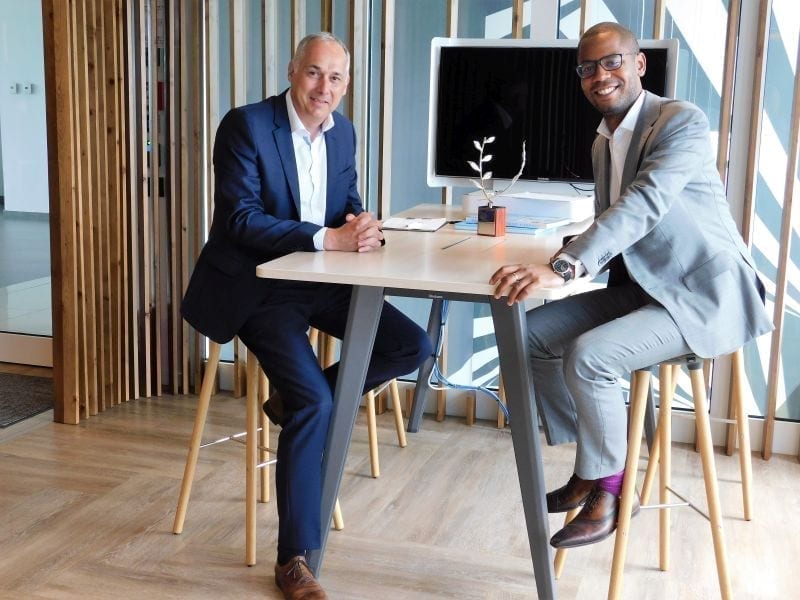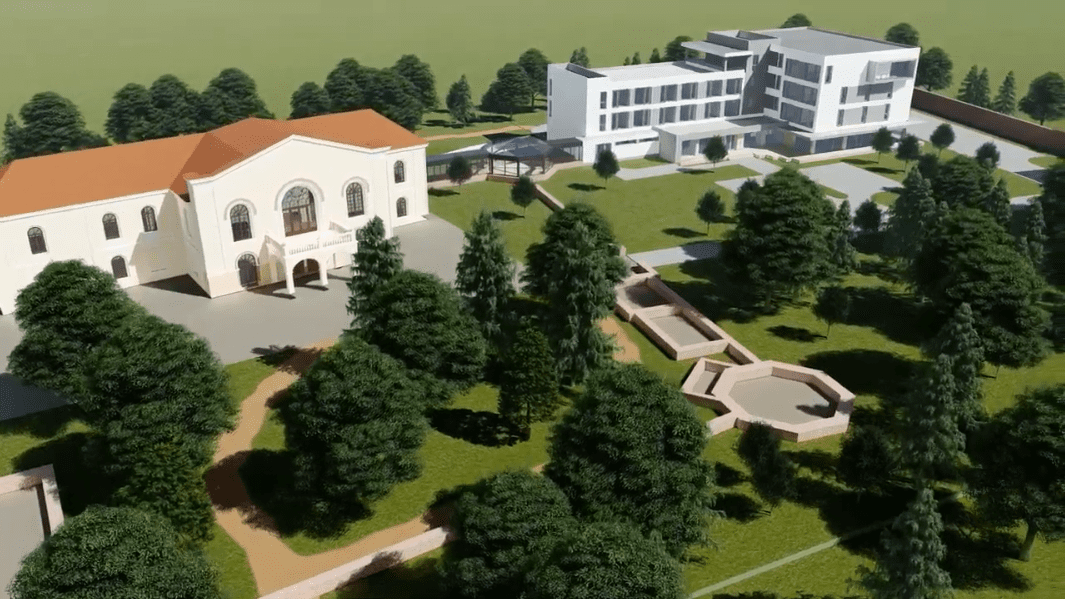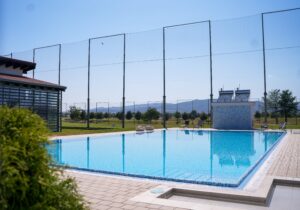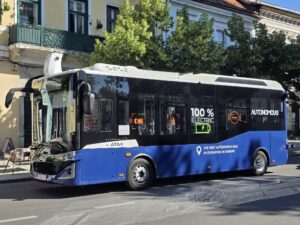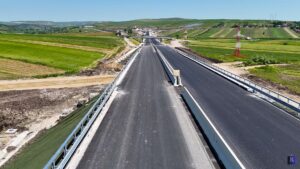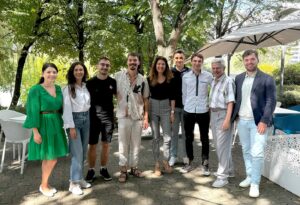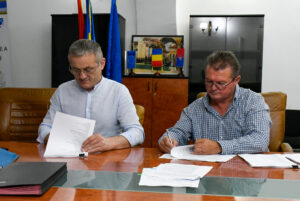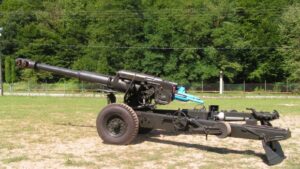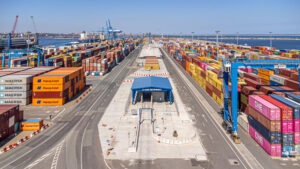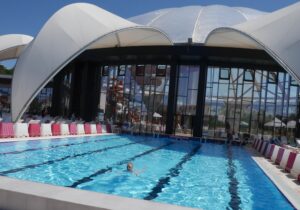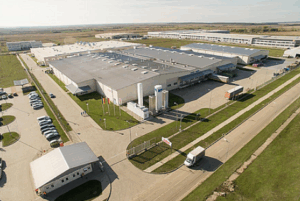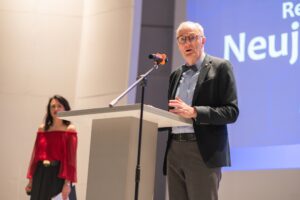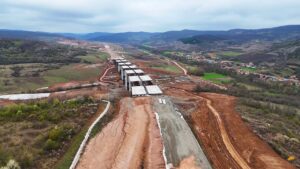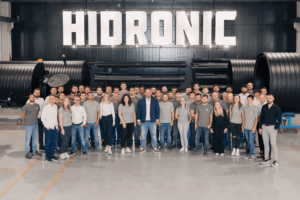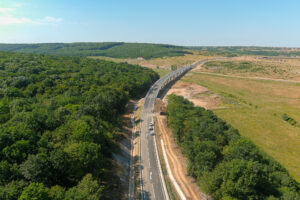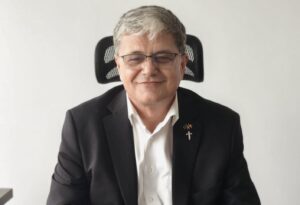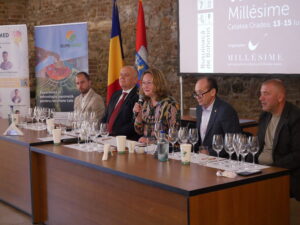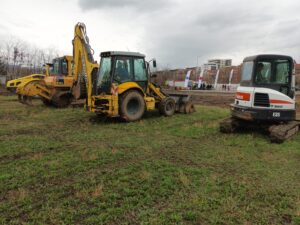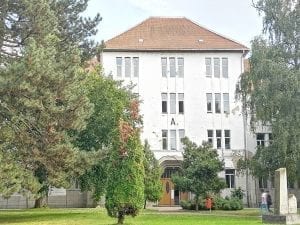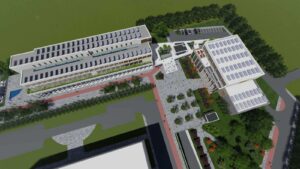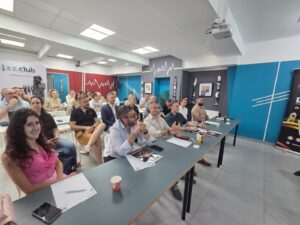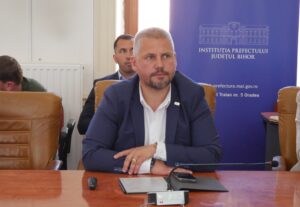A terminal building under a transparent dome, drowning in greenery, with a passenger pier and with a key or X-shaped roof. These and other concepts were presented by British architectural offices as potential designs of the Solidarity Transport Hub Poland terminal. The designs will serve to inspire work on the master plan, scheduled for commission at the beginning of next year
Architectural workshops that took place over the last couple of days were a joint initiative of the British Embassy in Warsaw and the Solidarity Transport Hub Poland. The overarching goal was to invite the premier architectural offices from the UK to present their vision of the STH, and better understand the current trends in airport construction.
‘We have invited architectural offices with an extensive and impressive projects portfolio, professional experience and creativity to cooperate with us. I think this was a good idea. Clashing the bold concepts with investor’s expectations turned out to be deeply inspiring, oftentimes presenting us with solutions we have never thought of before. We have therefore entered a new stage of the airport planning phases’ said Dariusz Sawicki, STH board member responsible for the airport component of the STH.
The investor is not under obligation to use any of the proposed designs, instead they are to serve as a source of inspiration for the project. ‘Only the best of the best were invited to participate in the workshop. I sincerely hope that the fruit of their work will be useful and inspiring for the company building the new airport in central Poland. On the other hand, the architects could acquaint themselves with the basic assumptions behind the project, and investors’ expectations. I am also glad we could establish and facilitate contact between the STH and the architectural design firms’ says Jonathan Knott, the British Ambassador to Poland.
Chapman Taylor
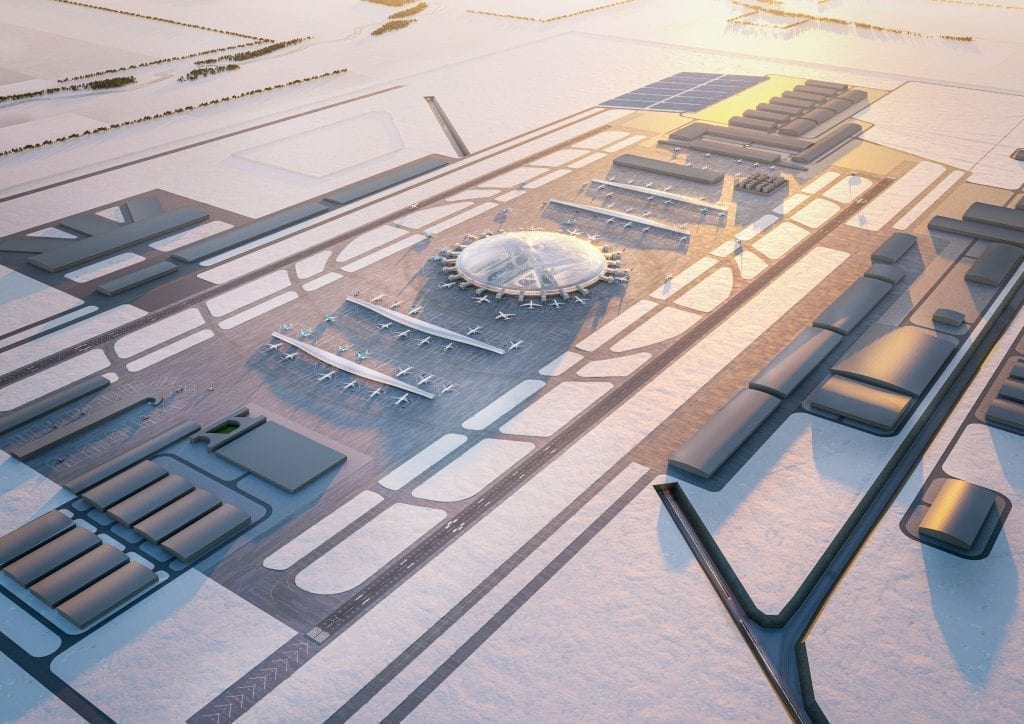
This London based studio prepared a design that assumes enclosing the main part of the terminal under a massive transparent dome, which is to be located between the two runways. As explained by the creators of the concept, the hemisphere is to symbolize infinite unity, and thus allude to the history of Poland. ‘The design principles underlying the design of the terminal building of the Solidarity Transport Hub are a reflection of Poland’s fundamental aspirations as a country: unity, sustainable development and a sense of place. We decided to replicate those key elements of Polish national identity in synergy with the unique „wow” effect, which will leave a lasting, positive impression on the passengers’ – said Peter Farmer, director at Chapman Taylor.
The entire structure will consist of six floors, with the lowest being railway platforms, allowing a tight integration of rail and airport components of STH. Additional levels will include an interchange floor for railway passengers, arrival and departure halls, business lounge, and a retail section with shops and restaurants. The design of each of six levels is to be styled after six distinct landscapes of Poland: the Baltic coast, Mazury lakes, lowlands, highlands, valleys and mountains.
The design focuses to a significant extent on sustainable development and energy efficiency, and proposes a widespread use of ground heat pumps for climate control in the terminal building, using biofuels and rainwater collection as well as utilizing electric vehicles to service the apron. Simultaneously a lot of attention was devoted to providing an ample amount of daylight and vegetation, drawing inspiration from Singapore’s Changi Airport. For that reason a space was reserved at the center of the construction for an ever green garden and a body of water, accessible via a wooden platform – all this so passengers can relax ahead of their journey.
Foster+Partners
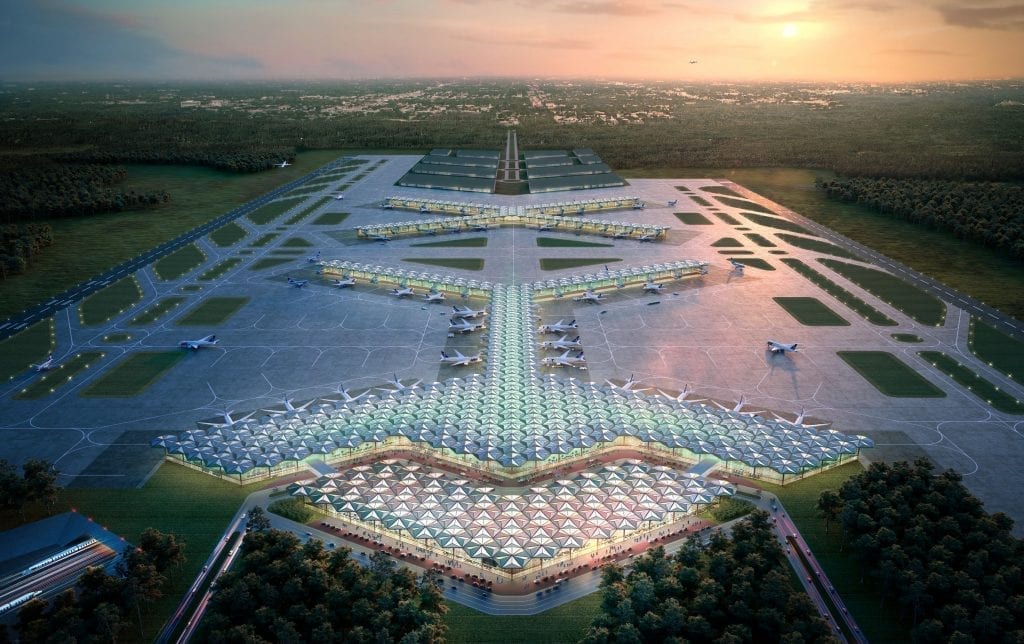
Concept developed by Foster+ Partners proposes construction of two terminal buildings; the main terminal is to resemble a key, while the second terminal is to be X-shaped, and would be built at a later stage as a part of the expansion program. Thus the company proposed a modular design of the airport, that can be phased over time, and adapted to the requirements of the growing demand for air travel. The project further assumes, that both terminals are to be connected and integrated, via for example a shuttle train running between the two buildings.
Semitransparent structure of the terminal is to become it’s defining characteristic, making the most of available sunlight. The entire terminal space is to be filled with trees and greenery, with F&P drawing inspiration from the Kampinos Forest near Warsaw, making travel experience more pleasant and less stressful for the passengers. Certain elements of the terminal building will be given a wood finish, a reference to traditional Polish architecture.
On the inside, Solidarity Transport Hub is to be divided into separate zones catering to the needs of different demographics: leisure, business, families and so forth. Antoinette Nassopoulos-Erickson, Senior Partner at Foster+ Partners stressed, that their vision combines Polish tradition with modernity, employing smart solutions and advanced technologies, such as far reaching automatization of passenger service, and usage of hyperloop cargo vehicles, as well as extensive use of sustainable materials.
Grimshaw
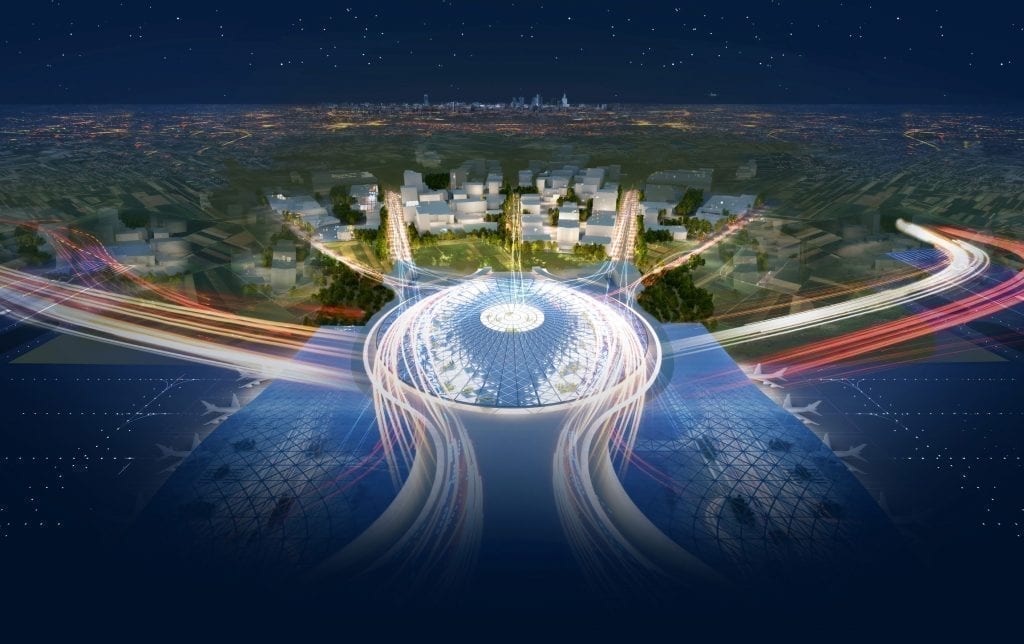
With STH in mind, Grimshaw architects created a concept of a “democratic hub”. The concept is inspired by Poland’s transition to democracy in 1989, and history of the Solidarity movement. Their vision is that of a terminal fit for the needs of those using it; moving away from the grandiose designs of some of the newer hub airports, and instead focusing on functionality, as well as avoiding unnecessary upscaling of the project. The overriding principle is to reduce the transfer time, and decrease the distance passengers need to walk in order to reach their destination.
The concept itself consists of six underlying assumptions: extensive use of daylight, minimalizing the horizontal and vertical distance needed for transfer, references to local specificity and the “spirit of place”, sustainable development, maximizing retail revenues, and excellent connectivity.
Transparent exterior of the terminal building is stylized on a layout and design of a traditional Polish market square. The airport itself offers ample place for rest, reducing stress that accompanies travel. Walking through the terminal, passengers could treat themselves to a delicious meal, do their shopping, relax or work in one of the quiet zones. A space is also provided for public events, such as lectures or performances. ‘We wanted to draw from marvelous Polish tradition, without going too far and avoid pastiche’ said Mark Middleton, Partner at Grimshaw.
Grimshaw’s concept offers convenient passenger solutions, regardless of which means of transportation they use to get to the airport, in keeping with the belief, that new modes of transportation, such as autonomous and electric vehicles will see widespread use in the coming years. Middleton has also described possible of phasing the construction, that differ in the size of the terminal, and the distance between runways.
Zaha Hadid Architects
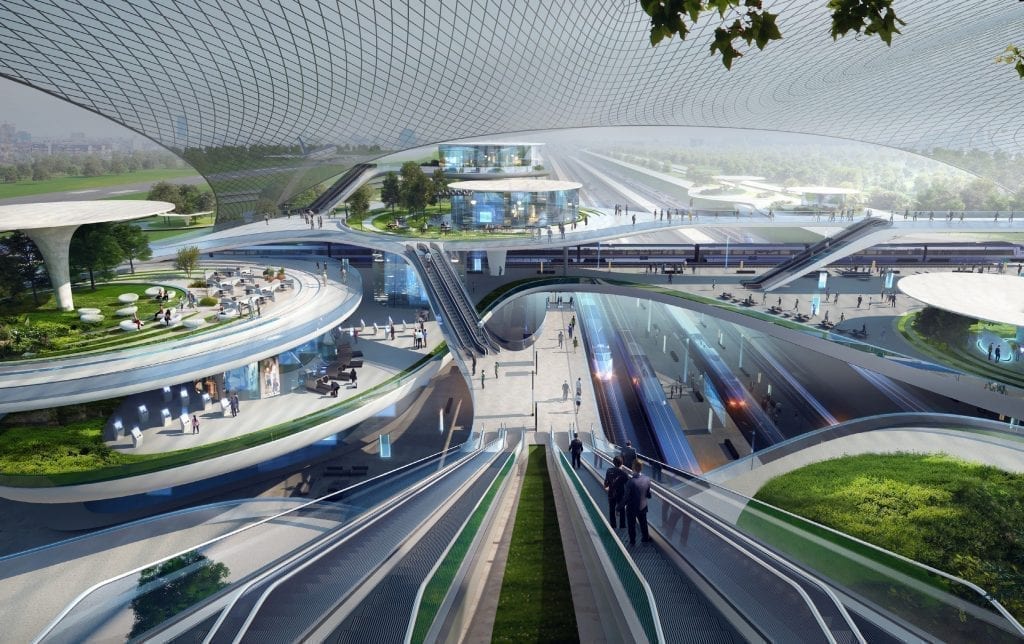
This UK based architecture firm, boasting an impressive project portfolio, has prepared three alternative designs for the STH, based on different approaches towards integrating airport with the railway station. All three projects share certain elements, such as good lighting of the airport space, made possible by frequent use of large area transparent elements, as well as incorporating lush vegetation, sustained by a well-designed system that supports the plants in Polish climate.
The first designs is to locate the railway station directly under the airport, allowing the passengers to observe oncoming railway traffic from the upper levels. The second version of the plan assumes placing a passenger part of the station just above the platforms, combining other elements of the airport as included in the master plan. The third designs, more futuristic in nature, proposes a solution where trains arrive directly at the airport terminal, with platforms located on different heights.
Associate Director Filippo Innocenti presented various project phasing options, integrating railway station with the airport, and management of passenger flows arriving and departing by train, airplane and cars. ‘STH is the sole greenfield project that is currently ongoing in Europe. We would like to learn more about investment needs and adjust our proposal to those requirements’ he explained.
Benoy
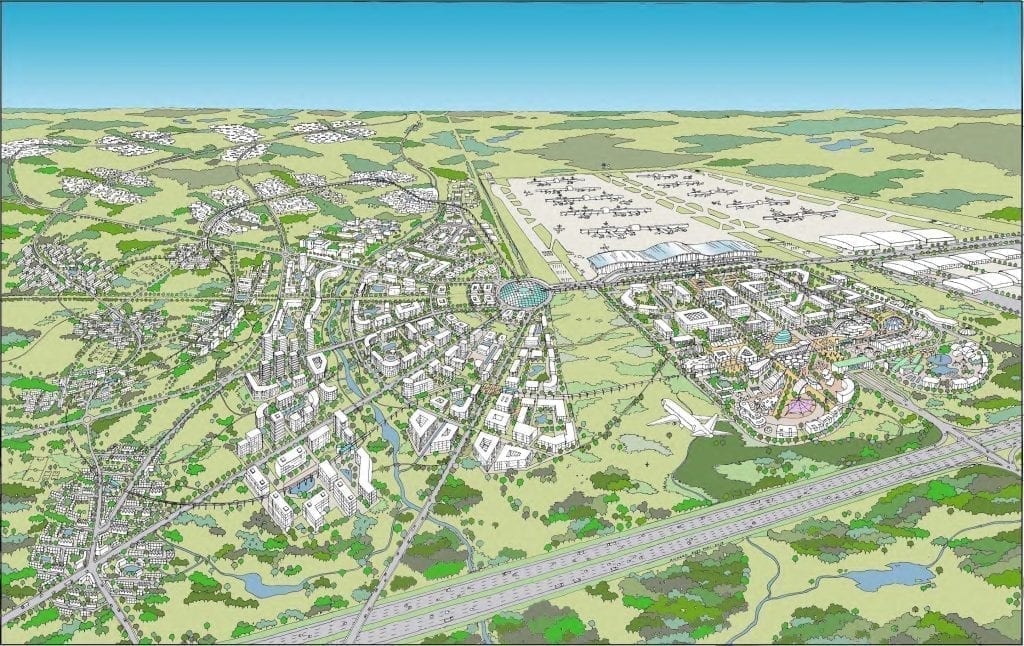
‘STH will be grow to occupy area larger than the entire Manhattan. This is why Benoy presented a holistic initial proposal for the development of the airport as well as the area surrounding it, where the airport city will be raised’ said Alan Thompson, Design Director at Benoy. Thompson described their vision as glocal, being simultaneously both local, and global.
Benoy stresses both ecology and sustainable development as key factors considered. In keeping the design proposes developing a green Airport City surrounding the Solidarity Transport Hub. The concept is enabled by placing some of the railway lines and motorways in the vicinity of the airport below the surface/underground. A multimodal transfer node will form a central part of the entire system, covered by a transparent roof. The node will integrate various of means of transportation, and will form a hub on which routes will converge.
Inside the terminal, Benoy’s design proposes blurring the boundaries between different sections of the terminal – including a smooth transition between the dining and waiting areas. Architects put emphasis on accentuating surface lighting, and ample greenery, helping passengers to find calm and relax ahead of their journey. Benoy was also the only studio to propose a north south runway layout, instead of the east west arrangement.
Pascall+Watson
Against the backdrop of the other concepts, that offered by Pascall and Watson stood out as the least specific. Project rector Nidesh Naidoo presented a number of solutions utilized by airports in London, Munich, Abu Dhabi and Hongkong, which he believed could be adapted to the needs of the STH. As a part of his presentation, Naidoo contrasted Istanbul’s concept of a megahub, with Changi’s idea of a multi-hub.
The objective was to make STH into a transport hub, which owing to it’s convenient transfers, well developed railway and motorway networks integrated with the airport itself becomes an integral part of the European transport network. Pascal+Watson team members underscored, that in order to make that a reality, the passengers will have to be provided with a care free and comfortable travel experience.
Consultations with architectural offices are a next step in the airport design process. In mid-April a strategic dialogue process was initiated with key industry partners. The inaugural meeting was attended by representatives of over 60 companies that will either work with or for STH. These consultations have yielded over 400 remarks, recommendations and proposals regarding the planned infrastructure.
At the same time STH has kick started it’s cooperation with the The International Air Transport Association (IATA). Airport Consultative Committee (ACC) was established, that will help design the new airport, with the first meeting of the Committee scheduled to take place on July 18th in Warsaw. IATA has invited all interested carriers to participate in the works of the Committee. In addition to the airlines currently operating out of the Chopin airport and other network carriers, a number of low cost and cargo airlines have also been invited to join the ACC.
At the turn of 2019 and 2020, STH plans to select a strategic-technical advisor, that will be chosen from a pool of international stakeholders with an extensive experience in financing, design, construction and operation of hub airports. Furthermore, STH will commission a masterplan of the new airport, that will include, inter alia air traffic forecasts, developing a precise spatial measurement of the STH infrastructure, and an initial spatial plan, detailed description of construction stages, as well as the final business model under which the new airport will operate.








